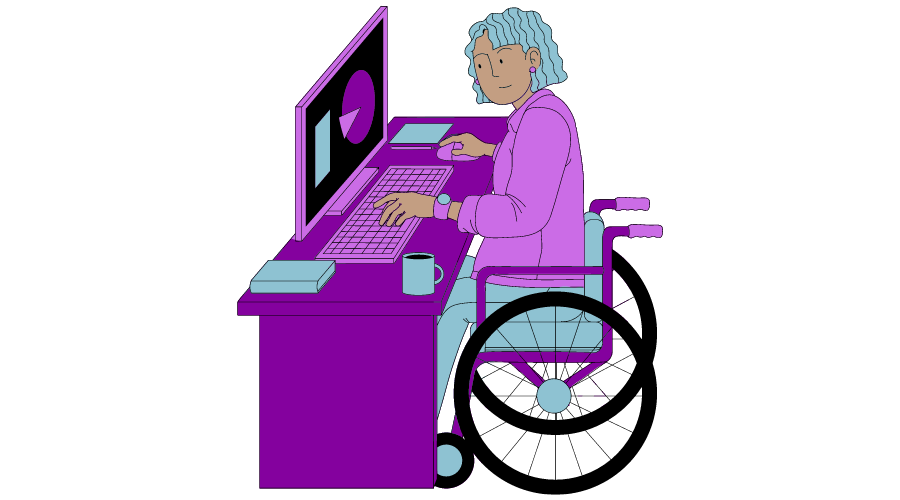What is Dependency? (Definition, Meaning, and Examples)
June 12, 2021 Max 4min read

What is Dependency?
Dependency Definition:
“Dependency refers to the logical and constraint-based relationship between interrelated tasks. This software engineering term shows the order in which you need to perform those tasks. Dependencies come up in every planning, development, and decision-making meeting. Ideally predetermined, the tasks can be predecessors or successors to the other tasks.”
In product management, dependency means a relationship between two tasks that teams must execute in a particular order.
If task A is dependent on another task B, teams must complete task B first to begin task A.
This situation frequently arises in cross functional teams, where development in one area depends on completing certain parts of initiatives in a different place.
Thus, teams must map the dependencies and plan to avoid disruptions to overall product development.
What Is Dependency Diagram?
What Are the Examples of Dependency?
Some Dependency Examples in General Context Would Be:
- Kids are dependent on their mothers/caregivers.
- The growth of plants is dependent on the sunlight they receive throughout the day.
- The lives of fish and other living beings are dependent on water.
Following Are Some of the Dependency Examples You Will Encounter in Project Management:
- Before any affirm decides to market a product or indulge in some PR stunts, they must seek approval from the CEO. It means the final say is in the hands of the director. Hence we can say that the PR is dependent on the CEO for final approvals.
- Only when an employee submits the necessary documents that showcase the travel receipts will they be able to receive the reimbursement amount from the employer. This example of dependency means that the reimbursement amount is dependent on the submission of reports.
- Development teams can fix a bug that the audience reposts only when they can understand the cause of the bug. Therefore, improving the bug depends on the cause of the bug.
Types of Dependencies
There are four types of dependencies:
Finish to Start (FS)
Finish to start is the most common dependency between two tasks. It implies that a task should first finish before the other one can start.
Finish to Finish (FF)
An FF dependency implies that a dependent task can only finish after its predecessor finishes.
The start of the dependent task does not need to rely on the predecessor’s opening. It can begin before, after, or even simultaneously as its predecessor.
Start to Start (SS)
The dependent task can only start after its predecessor has begun in an SS-type dependency.
Start to Finish (SF)
An SF dependency means that a task can only finish after its predecessor has started.
How To Manage a Dependency?
Dependencies require a focused approach and in-depth analysis of a product to minimize the risk of any potential problems or issues.
An effective roadmap at all stages can be one of the most effective ways to counter any issues due to dependency. As time passes, a product naturally grows and becomes more complex.
Identifying the type of dependencies soon can help a team dodge any confusion that may come with the product becoming more complex.
Once the teams successfully establish the dependencies in a product, they should make decisions only regarding a particular part of the product.
You can conduct this process only after analyzing all the risks involved, considering the other areas the decision could affect.
How You Can Manage Dependencies in Project Management?
While working with dependencies, one thing to keep in mind is that it would help you immensely if you use product management software.
You can work smoothly by using a seamless product management software such as Chisel. It gives you a ready made tool to jot down your product dependencies.
Managing dependencies for projects with product management software is always appreciated. They give you ready formats, and you don’t have to worry about the formatting.
Dependencies and Constraints
Discuss with your team members all the dependencies, including the cross functional dependencies. Also, focus on the constraints associated with those dependencies.
You can take the help of the critical path if you think your team has too much on its plate with a lot of dependencies and constraints.
Involve the Stakeholders
You must constantly engage with your stakeholders. Involving stakeholders helps them understand all the dependencies and constraints the team is currently focusing on in the project.
Do include all the components of the critical path.
Note All the Obstacles and Challenges Related to the Dependencies and the Constraints.
While you jot down all the necessary challenges you might face with dependencies, involving a cross functional team will also bring a different perspective.
Once you have discussed all the possible obstacles the teams might face during the project, then come up with the solutions to those challenges.
You may add this third point to your change and risk management documents.
There is no independent project. Almost all projects will have dependencies.
However, you can use these dependencies to your advantage if you can successfully speed up the time taken to execute the activities.
FAQs
Following are some of the real-world dependency examples:
- “You cannot translate your website unless you hire a translator,”
- “Dinner can only start after the food is prepared,”
- “A concrete floor cannot start to be leveled unless you pour it first.”
A dependency in product software development may require a particular library for some part of code to execute it.
The dependency matrix is a compact way to represent and navigate across dependencies among components.
Cross functional dependencies refer to the dependencies that will come from different cross functional teams. These cross functional dependencies will help the teams reach the outcome of their product development.
